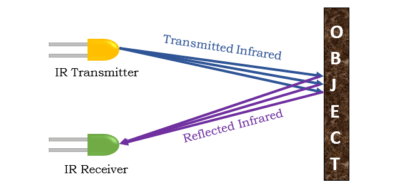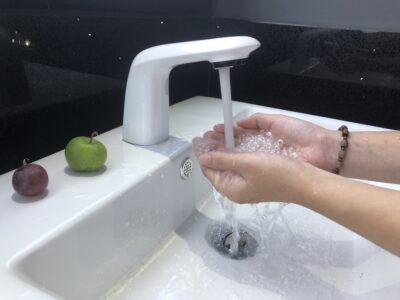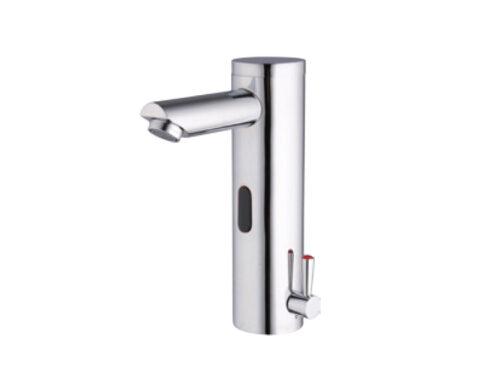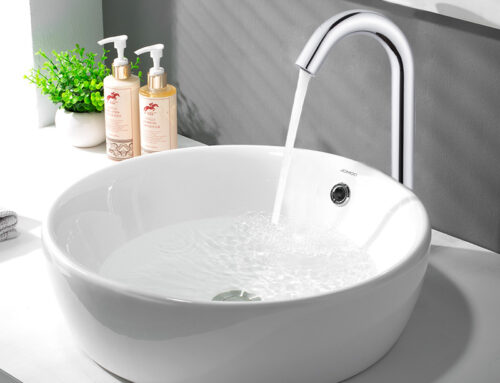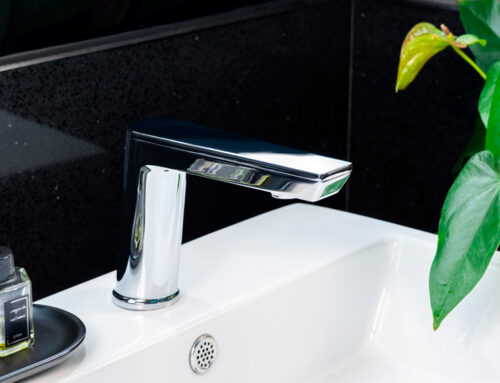Tap sensors have become more and more commonplace in commercial building toilets due to the hygiene and convenience advantages they offer. With this installation, the user does not need to press buttons with soapy hands. Furthermore, it ensures that water consumption is minimized as the tap is turned off without user detection. Significant cost savings are expected for water utilities.
How does the tap sensor work?
An automatic faucet or tap (also known as a hands-free faucet, touchless faucet, electronic faucet, motion-sensing faucet, sensor faucet, or infrared faucet) is a faucet equipped with an infrared sensor, which emits an infrared LED beam (invisible to the human eye); once something, like a hand, interrupts the infrared beam, the infrared light is reflected back to a receiver in the faucet sensor, which then opens a solenoid valve, allowing the water to flow. Once the hand leaves, the valve will automatically close the water.
Application of Tap Sensor
Sensor-controlled automatic taps are common in public restrooms, airports, and hotels, especially for disabled access public restrooms, offices, schools, shopping malls, and stadiums, where they can reduce the spread of disease-causing microorganisms. Sensors detect the presence of the user’s hand in the field directly above the basin – which activates the flow of water until the hand is removed from the field.
They can also be found in some kitchens and the bathrooms of some private homes. Other uses include providing drinking water to pets or livestock, where the presence of the animal activates electronic faucet sensor controls that allow water to flow into sinks or dishes.
How can sensor taps support infection control?
Traditional restroom or bathroom faucets are operated by cross-head, lever, or button mechanisms, all of which require the user to make physical contact with the faucet to make water flow. Using the infrared faucet, the user activates the water flow by placing their hand within 23-26 cm of the device.
As a touchless faucet, the user does not have to physically touch the faucet surface, so indirect exposure to germs, bacteria, or infection is greatly reduced.

